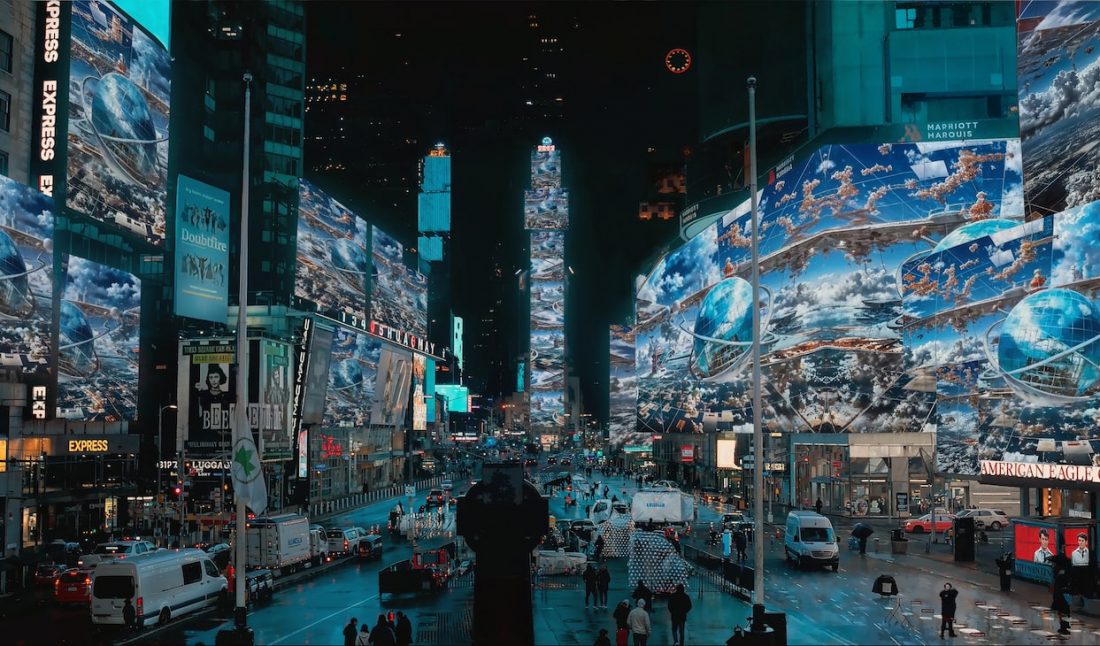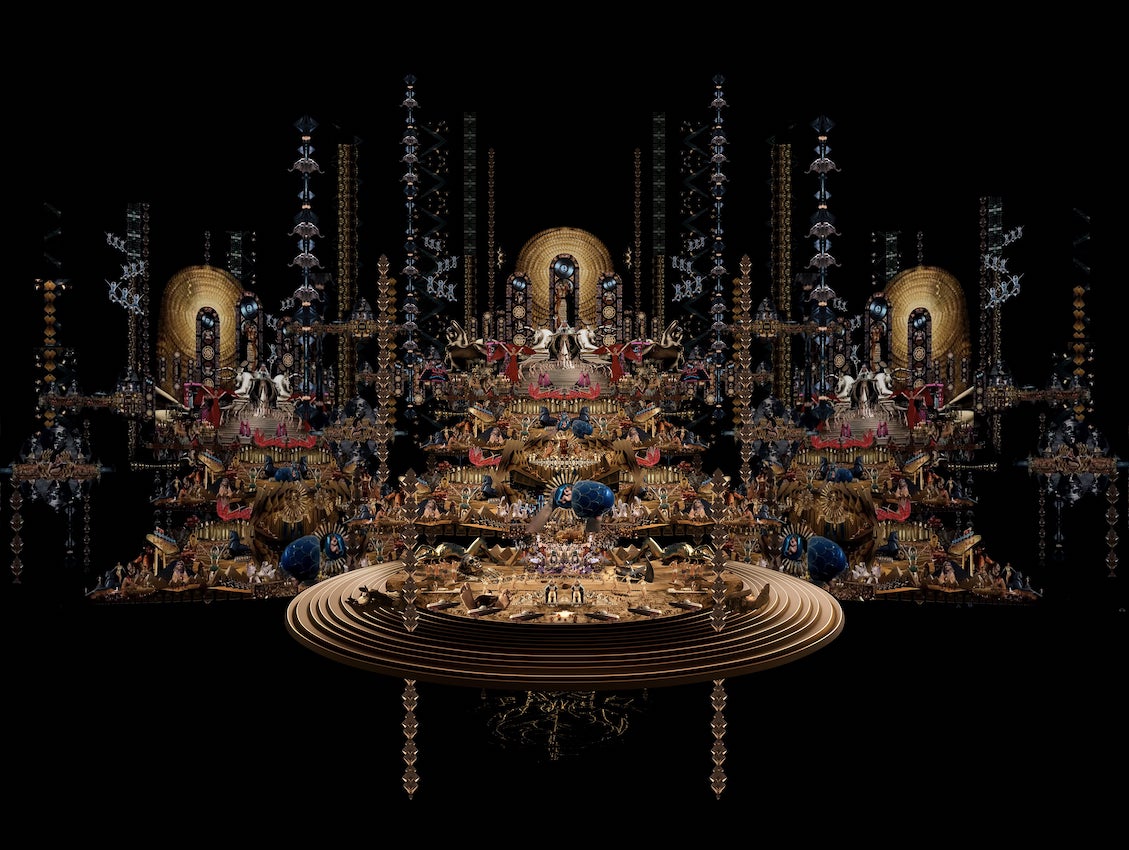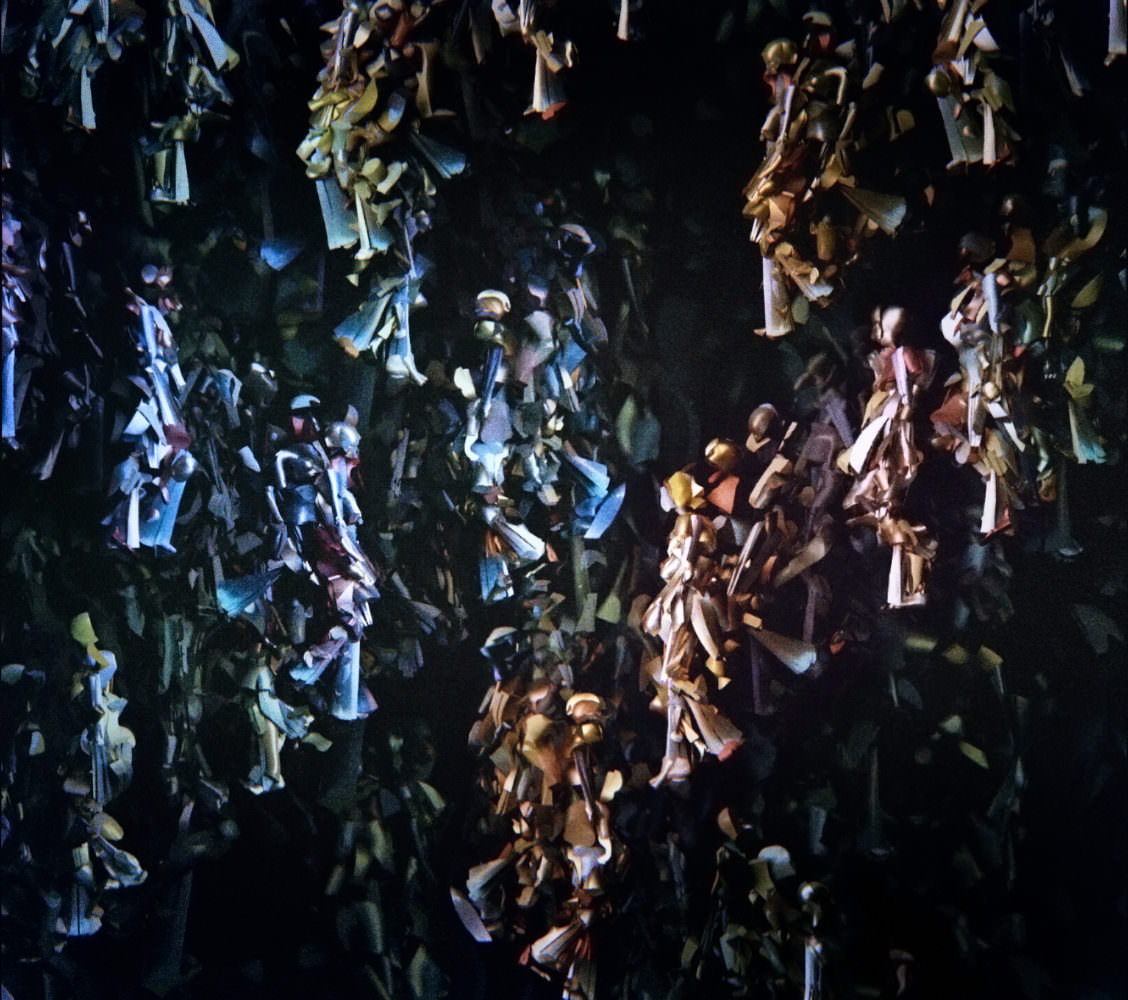This June, New York City’s Times Square Alliance presents the latest project by Marco Brambilla onto the big screens. Between 11:57 pm–12 am from June 1–30, onlookers can watch “Approximations of Utopia,” as Brambilla’s artwork takes over the landmark for their nightly Midnight Moment, presented in partnership with the Queens Museum and Artnet. This is now Brambilla’s third public project showcased at Times Square, yet a drastic shift from his single-screened project presented in the 1990s.
The project has multiple iterations, all of which propose different visual representations of prospective utopian World’s Fairs, and Brambilla’s New York digital public program is the first part of his overarching project.
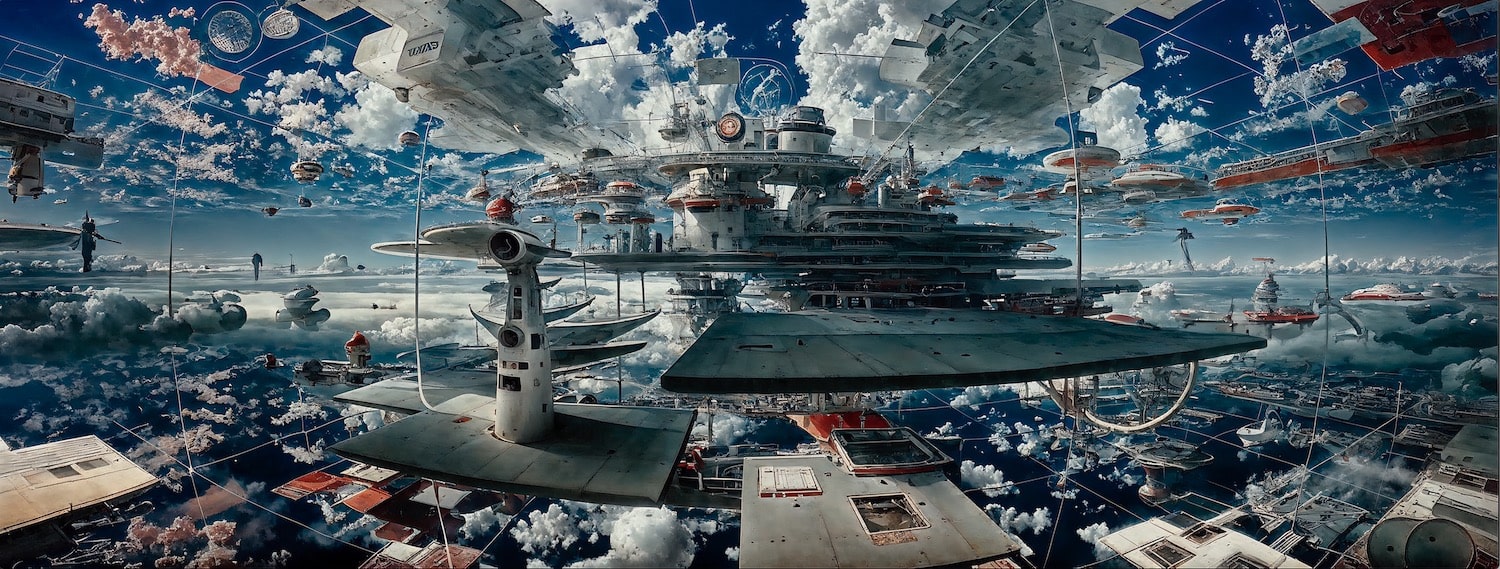 Courtesy of Marco Brambilla Studio.
Courtesy of Marco Brambilla Studio.
Marco Brambilla Reflects on the Wonders of a World Exposition
World Expositions, global events that showcase international progress through both architecture and technology, signify the artist’s curiosity towards the utopian vision and intrigue in progress. For this first iteration at Times Square, Brambilla’s “Approximations of Utopia” reincarnates and reinterprets the forward-looking spirit of six historical World Expositions.
For this first chapter of his broader project, Brambilla drew from Brussels in 1958, New York in 1964, Montreal in 1967, Osaka in 1970, Seville in 1992, and Shanghai in 2010 as his base inspirations. These six events, out of the more than 100 historical universal expositions, particularly embody Brambilla’s theme of the power of technology, from Brussel’s postwar exploration of the atom in 1958 to Shanghai’s 2010 tagline “Better City, Better Life.” “Approximations of Utopia” therefore points to the persistent global dialogue surrounding progress, technological advancement, and better living.
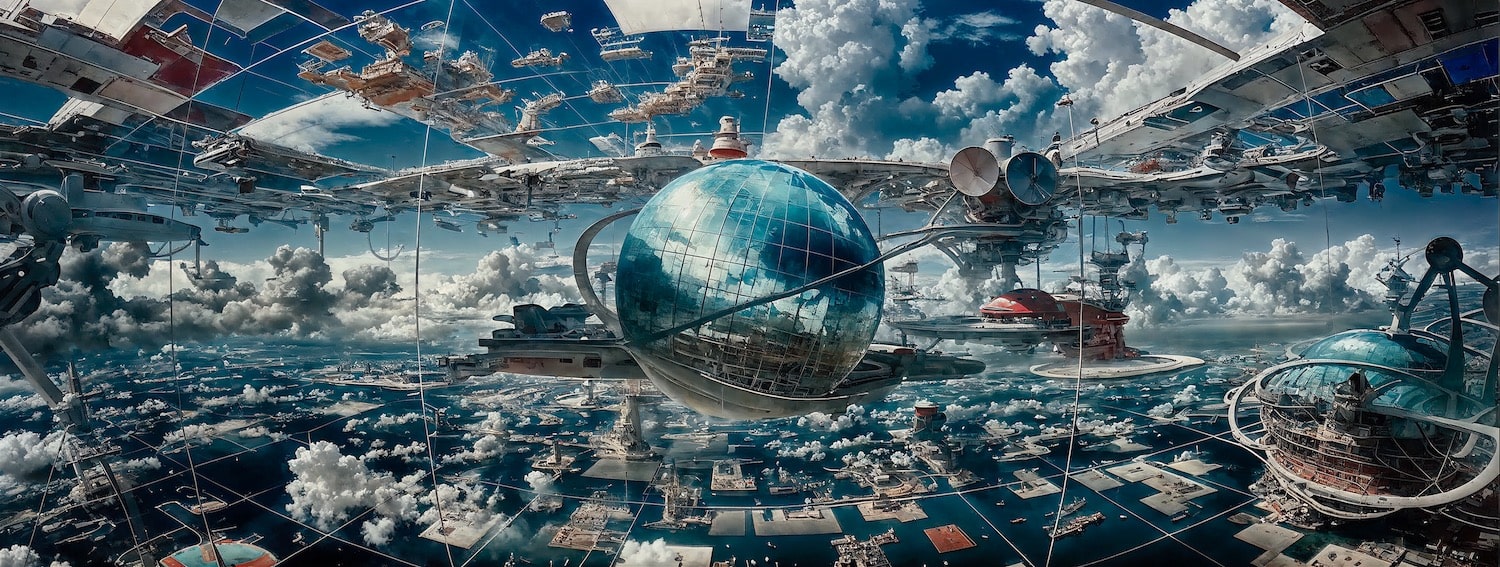 Courtesy of Marco Brambilla Studio.
Courtesy of Marco Brambilla Studio.
Archived Imagery, Advanced Technology
Brambilla, known for his technological adaptations and three-dimensional images and videos, takes these historical visions and presents a digital image of a prospective utopian World’s Fair. The artist took archived imagery and information from his six city inspirations and then reimagined them using artificial intelligence programming, forging a technological collage.
Each architectural structure in the piece draws from the spirit of each nation, with a particular emphasis on the aspirations and hopes from each city’s historical World’s Exposition.
Using a range of AI imaging tools, the creation of “Approximations of Utopia” utilized a range of growing technologies to achieve Brambilla’s vision. Brambilla initially started his project with the first-generation AI image processor Dall-E 1, and then progressed through various newer technologies including Runway, Midjourney versions 4 and 5, Stable Diffusion, and Magnific AI. With this blend of technologies, Brambilla’s project is a testament to the blossoming potentials and rapid growth of artificial intelligence in contemporary artistic projects.
The digital canvas pays tribute to its archival inspiration as it toys with historical World’s Fairs, but with unique additions provided by artificial intelligence engines. This utopian melange of old influence and new technology thus blurs the boundaries of time, presenting a free-running infinite space. The piece additionally dissolves geographic lines, as the virtual world features elements from all six countries’ expositions.
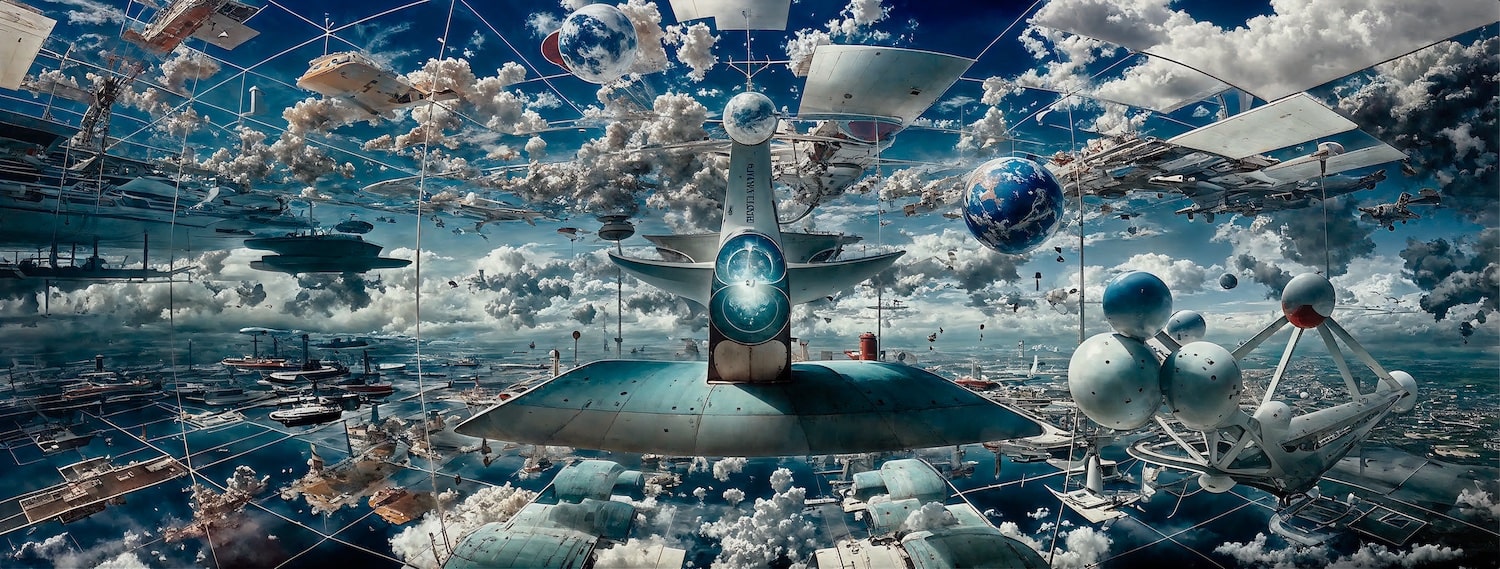 Courtesy of Marco Brambilla Studio.
Courtesy of Marco Brambilla Studio.
A Special Tribute to 1964 New York
The project’s debut in Times Square is an additional nod to New York’s 60th anniversary of its 1964 World’s Fair in Queens’ Flushing Meadows-Corona Park. The exposition debuted the Unisphere– then the world’s largest sphere– which still stands in Queens today. With the partnership of Queens Museum, “Approximations of Utopia” in Times Square is a celebration of this landmark anniversary and its ties to international innovation.






